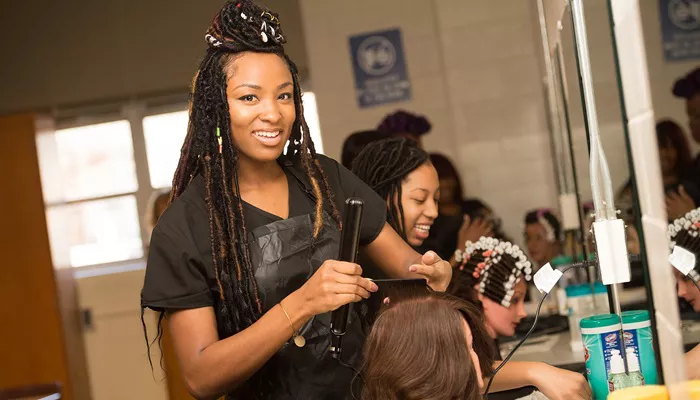A new law in California requires hairstyling, barber, and cosmetology programs to provide training on all hair types and textures. This law also mandates that licensing exams include questions about various hair types.
Brittaney Gandy understands this need both professionally and personally. Ten years ago, when she moved to San Diego, she struggled to find a stylist familiar with her tight coils. She eventually turned to wigs as a temporary solution and decided to become the stylist she could not find.
“When you sign up for school, they don’t tell you much about the curriculum. You only know you’ll learn about sanitation regulations and similar topics,” she explained.
Although she attended a well-known hair school, Gandy noted that the techniques taught primarily catered to straight hair. For instance, students were trained to cut hair while it was wet.
“Curly hair reacts differently when wet. It doesn’t exist in a two-dimensional space; it’s more like a three-dimensional world. You have to consider shrinkage,” she said. Instead of focusing on curly hair, the training emphasized straightening techniques.
To fill this gap, Gandy turned to YouTube, teaching herself various styling techniques from stylists around the globe. She practiced on her own hair until she felt confident enough to embrace her natural look.
“Being able to wear my natural hair without hiding behind a hat is liberating,” she said.
While she is pleased that the law has passed, Gandy believes more work remains. She stresses that just because schools are now offering training for natural textures does not guarantee quality education.
“I hope schools hire knowledgeable educators with real experience in styling curly hair. I don’t want graduates leaving claiming they can handle curly hair but actually damaging it,” she added.
Gandy has noticed a surprising demand for curly hair specialists. In 2022, she launched her salon, CurlCousin, and welcomed 700 new clients in its first year.
“As a Black woman in San Diego, I rarely see anyone who looks like me. I was unaware of the many Black people in this city. But they’re in my chair now,” she said.
Gandy believes it’s crucial for stylists to be open to working with different hair types.
“Hairstylists should be free to specialize in what they choose. The last thing you want is a stylist working on your hair who isn’t interested,” she noted.
She also emphasizes that many clients have textured hair, often without stylists realizing it.
“Most clients already have textured hair when they sit in your chair; you’re just blowing it out. Textured hair education isn’t just for those with coils and curls; it also benefits those wanting to wear wavy styles,” she concluded.
You Might Be Interested In

